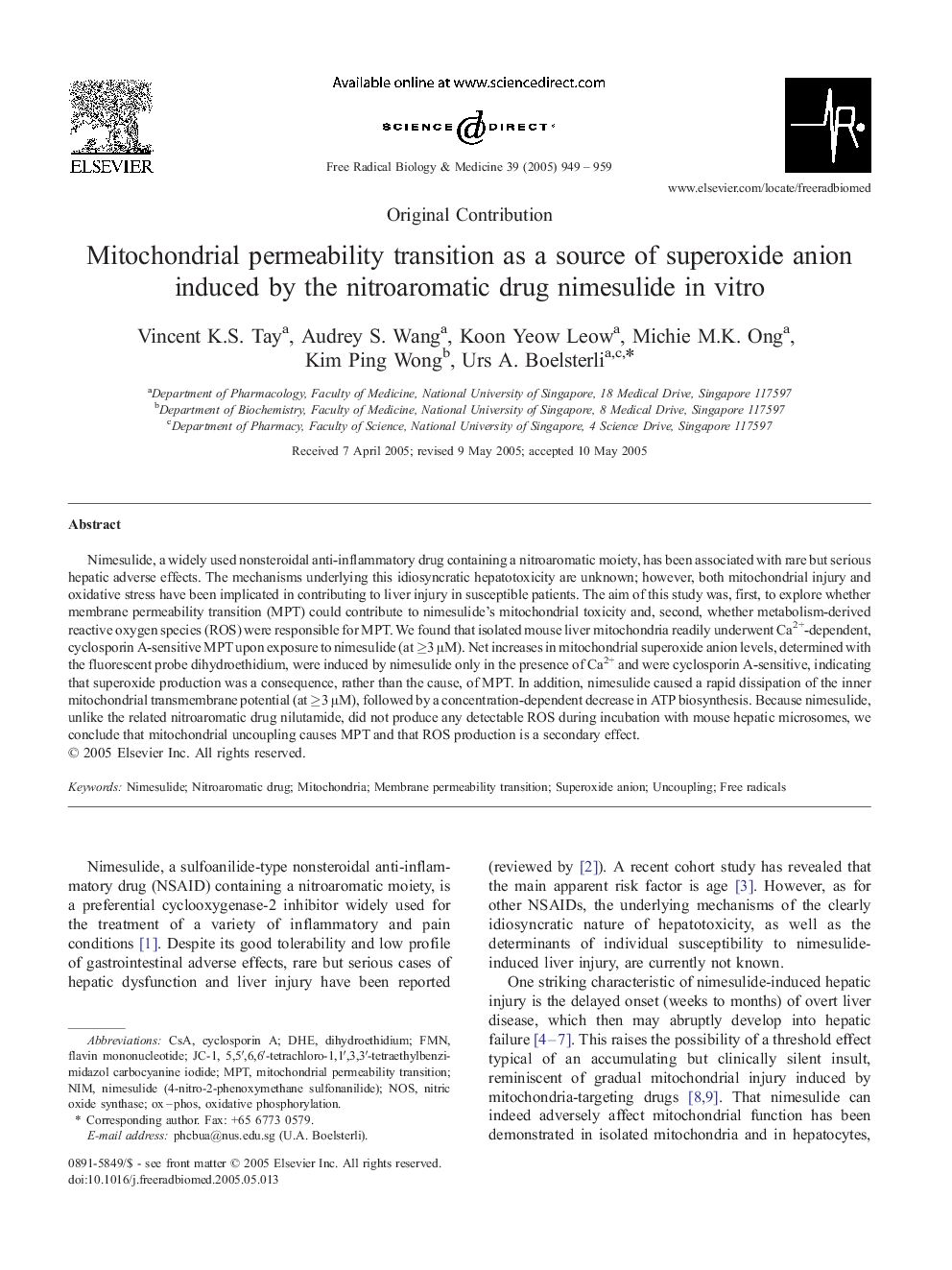| Article ID | Journal | Published Year | Pages | File Type |
|---|---|---|---|---|
| 10739023 | Free Radical Biology and Medicine | 2005 | 11 Pages |
Abstract
Nimesulide, a widely used nonsteroidal anti-inflammatory drug containing a nitroaromatic moiety, has been associated with rare but serious hepatic adverse effects. The mechanisms underlying this idiosyncratic hepatotoxicity are unknown; however, both mitochondrial injury and oxidative stress have been implicated in contributing to liver injury in susceptible patients. The aim of this study was, first, to explore whether membrane permeability transition (MPT) could contribute to nimesulide's mitochondrial toxicity and, second, whether metabolism-derived reactive oxygen species (ROS) were responsible for MPT. We found that isolated mouse liver mitochondria readily underwent Ca2+-dependent, cyclosporin A-sensitive MPT upon exposure to nimesulide (at â¥3 μM). Net increases in mitochondrial superoxide anion levels, determined with the fluorescent probe dihydroethidium, were induced by nimesulide only in the presence of Ca2+ and were cyclosporin A-sensitive, indicating that superoxide production was a consequence, rather than the cause, of MPT. In addition, nimesulide caused a rapid dissipation of the inner mitochondrial transmembrane potential (at â¥3 μM), followed by a concentration-dependent decrease in ATP biosynthesis. Because nimesulide, unlike the related nitroaromatic drug nilutamide, did not produce any detectable ROS during incubation with mouse hepatic microsomes, we conclude that mitochondrial uncoupling causes MPT and that ROS production is a secondary effect.
Keywords
Related Topics
Life Sciences
Biochemistry, Genetics and Molecular Biology
Ageing
Authors
Vincent K.S. Tay, Audrey S. Wang, Koon Yeow Leow, Michie M.K. Ong, Kim Ping Wong, Urs A. Boelsterli,
